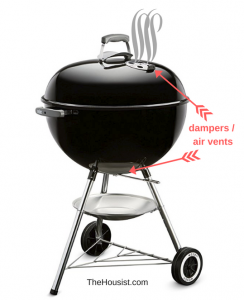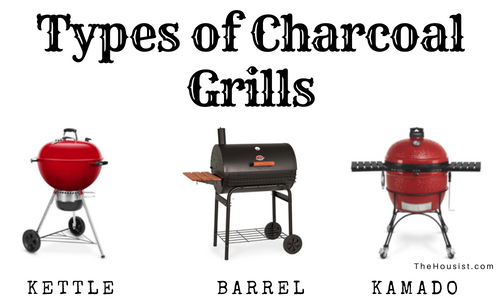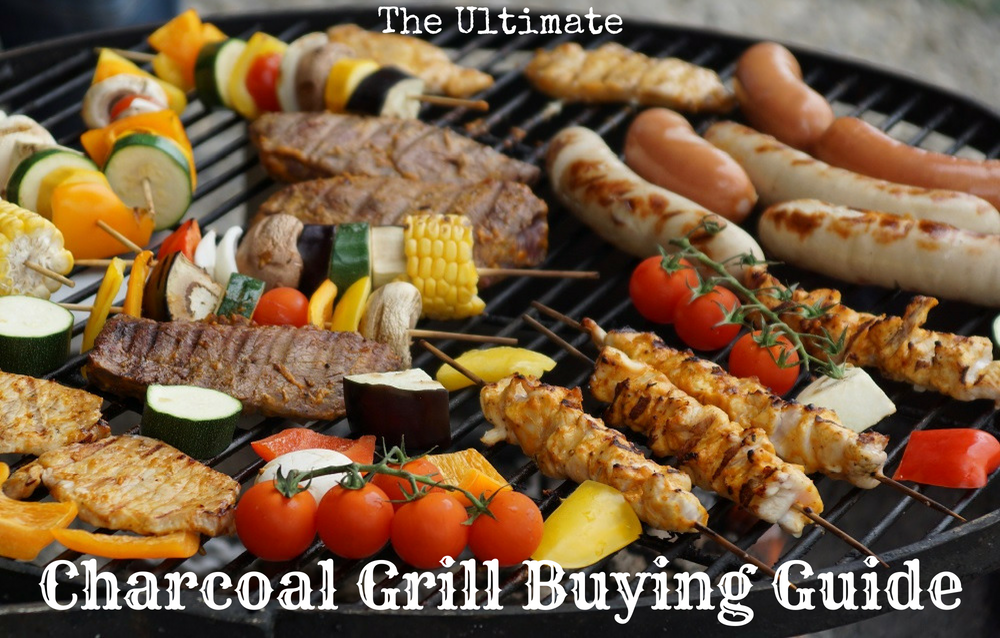How to Buy Charcoals Grills
Charcoal grills are a classic summer tradition that has been around for decades. Though their overall popularity has declined as interest in gas grills has sprung up, there are staunch charcoal grilling loyalists who will never consider buying a gas grill.
While charcoal grills may take a little more work than a gas grill, they do get hotter than gas grills (with the exception of infrared burner grills) and can give a steak a dark sear that gas can’t match. You can also get a great charcoal grill cheaper than an equivalent quality gas grill making them a great option for anyone on a budget. Additionally, since they have fewer features than gas grills, they tend to easily outlast their gas counterparts.
Need some inspiration? Check out this delicious T-Bone Recipe.
While these grills are simpler, there are still several things you should know about charcoal grills before bringing one home.
Temperature Control
Controlling the temperature of your grill is critical. On a gas grill, you simply turn a knob to control your heat. On a charcoal grill you have to use air flow and distance of the charcoal to your food to control the temperature. How tightly the lid seals is also critical for temperature control – a tightly sealing lid will keep the grill much hotter than a lid which fits loosely.
Controlling Airflow
Airflow is one of ways to control how hot your charcoal grill gets. When you are let more oxygen into the grill, you will get more heat. To keep the heat lower, decrease the size of the air intake and keep your fire smaller. This is done with dampers, or air vents.

Every charcoal grill needs at least two dampers – an intake to bring in the air and an exhaust to breathe out. The damper should seal tightly in order to properly regulate your airflow. A bad seal will allow extra air in and reduce your control.
Typically you can leave the exhaust wide open and simply change the intake to adjust your airflow.
Charcoal Height
The second way to control how hot your grill gets is to change how close your charcoal is to your food. Not all grills have this feature, but it makes it a lot easier to control your cooking temperature. Heat dissipates very quickly so there is a big difference between your charcoal being 2 inches from your food vs 8 inches.
Access to Charcoal
A final feature that you should look for in a charcoal grill is easy access to your charcoal while cooking. This will allow you to add more charcoal or reposition existing charcoal to get a more even heat distribution.
Types of Charcoal Grills
There are three main types of charcoal bbq grills: kettle grills, Ceramic (Kamado) grills, and barrel grills. These will vary in price and features but all can cook a burger to perfection.

Kettle Grills
A kettle grill is the most common type of charcoal grill and is probably what comes to mind when you think of a charcoal grill. Kettle grills will be your cheapest option for a charcoal grill and are often smaller and more portable than other charcoal grills. If you want a charcoal grill for tailgating or camping you should be looking at a kettle grill unless you want to bring your grill along on a trailer. They gets their name from the lower part of the grill which contains the charcoal, which is shaped like a kettle.
The ubiquitous kettle design is great at distributing heat evenly across the grilling surface and allows for excellent heat circulation with the lid on. These kettle grills also tend to have minimal flare ups when the lid is on the grill due to the reduced oxygen intake.
A couple other things to keep in mind when buying a kettle charcoal grill:
Cheaper grills may have lower quality dampers / air vents so make sure to inspect these when you’re looking at different kettle grills.
These grills tend to be smaller than other charcoal grill options – they work well for families and small groups but if you frequently have big parties you may want to invest in a larger grill.
Barrel Grills
Barrel grills are very distinctive – they look like someone put a large metal grill on its side and cut it in half. These are great for grilling as well as smoking and will be your middle of the road option.
The exhaust vent on a barrel grill typically sticks out of the lid like a chimney and controls how much smoke is able to escape from the grilling chamber. The air intake vent is cut into the bottom of the barrel.
Barrel grills are a great option if you frequently entertain and want want a large grilling surface but don’t want to break open the bank for a ceramic grill.
Ceramic / Kamado Grills
Let’s start with “What is a Ceramic / Kamado Grill?” A ceramic grill, often referred to as a Kamado grill, is a charcoal grill that has a ceramic grilling chamber. (Kamado comes from the Japanese word for stove or cooking surface.) These grills retain heat better than metal grills and can create much hotter temperatures than metal grills – up to 750 degrees.
Since ceramic grills get so hot, they are very versatile – you can cook just about anything that will fit on the grill.
While the airflow is important on any charcoal grill, it is exceptionally important on ceramic grills. Make sure that a ceramic grill has excellent dampers to properly control the heat of your grill while cooking.
As Kamado grills have better heat retention than metal grills they will heat up faster, better contain smoke, and oftentimes, cook more evenly. The end result is steak with excellent flavoring. These grills will also cost more than other charcoal grills.
